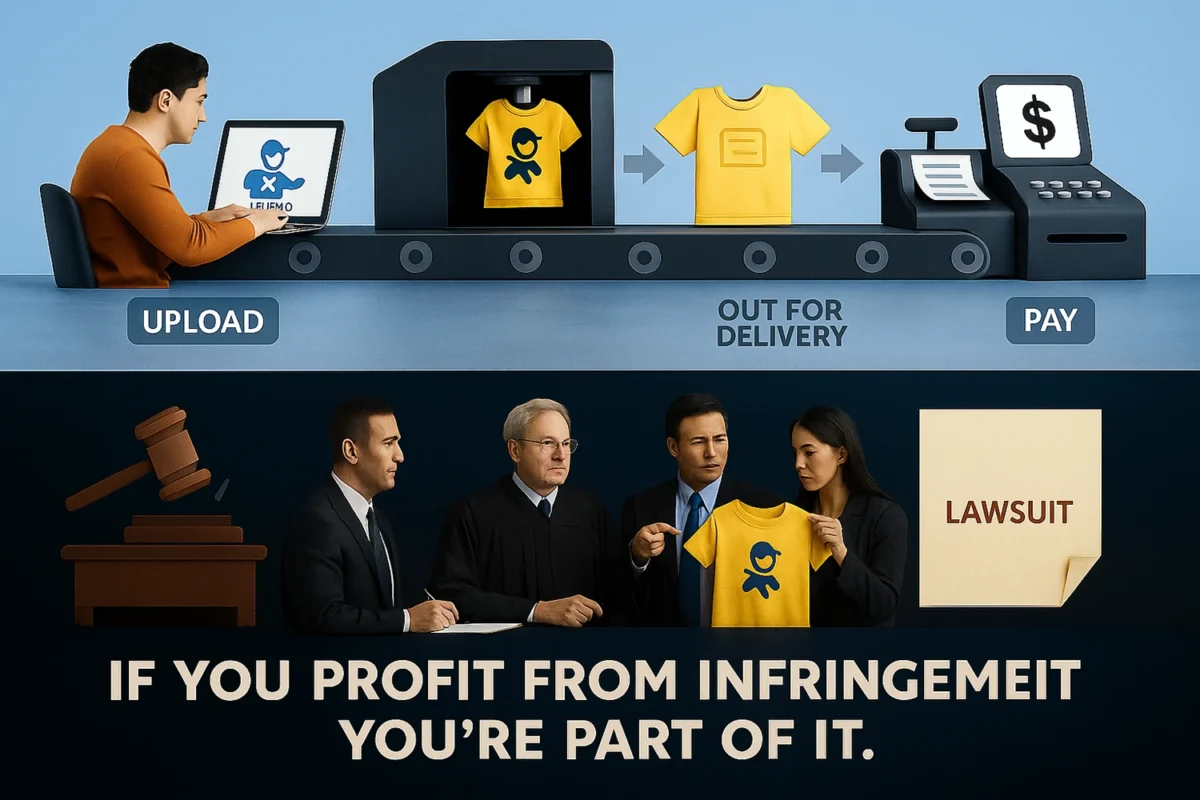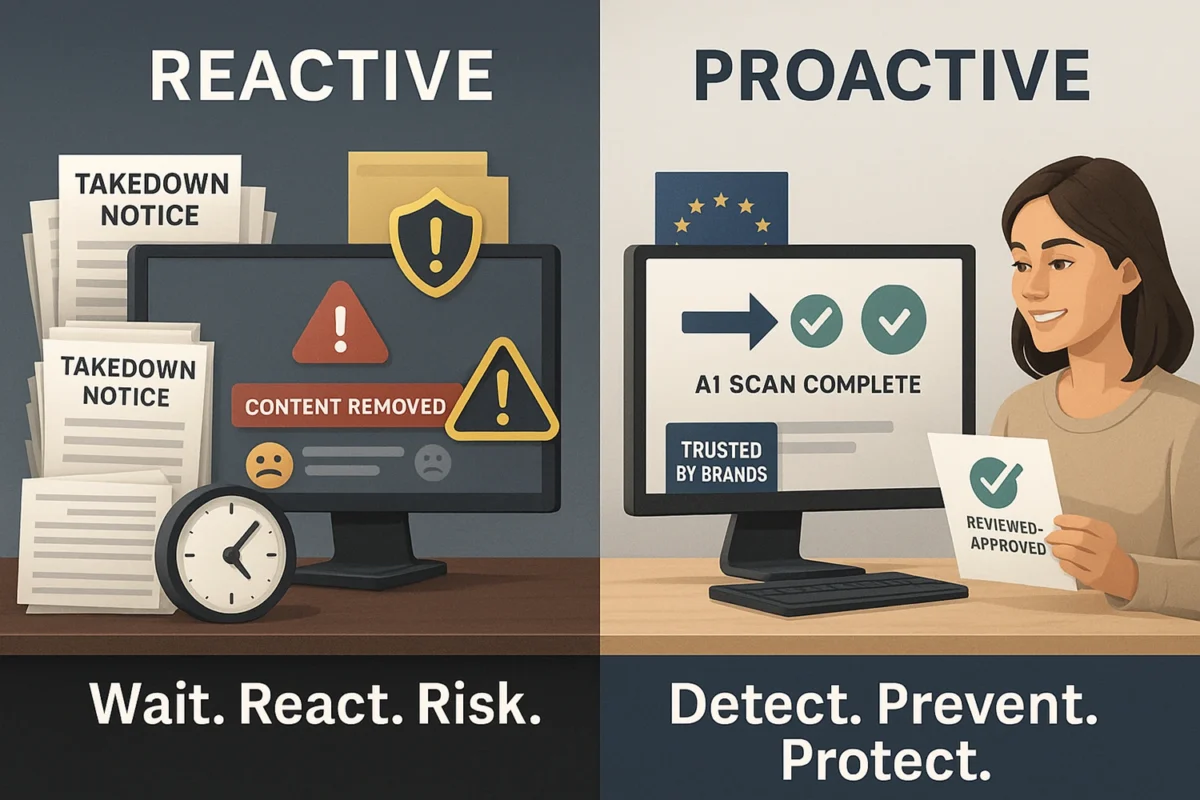How Platforms Can Use Public Domain Art Safely (And Where It Goes Wrong)
For POD platforms and creators, public domain art can seem like a goldmine:
“It’s free to use! No risk! No licenses needed!”
But in reality?
Public domain use is one of the most common sources of accidental IP violations on POD platforms.
Here’s how to leverage public domain content safely—and where platforms (and their users) often go wrong.
1. Use of Public Domain Art in POD
Public domain art can be a great creative source when used correctly.
What’s fair game?
- Works where copyright has expired (based on jurisdiction)
- Government publications (in many countries, e.g., U.S. federal works)
- Works the creator has explicitly placed in the public domain (via CC0 or similar)
- Certain vintage works, such as Steamboat Willie (now public domain in the U.S. as of 2024)
Why POD platforms love it:
- No royalties
- No licensing fees
- Easily remixed and repurposed
- Huge creative variety (vintage, classic, educational, historical)
Key: If verified properly, public domain content can offer low-risk monetization opportunities for creators and platforms alike.
2. Where Does It Go Wrong?
This is where many POD platforms and creators get burned—thinking something is public domain when it isn’t.
Common mistakes:
Modern Modifications Are Still Protected
- A colorized version of a vintage image may be protected.
- A digitally restored or enhanced version may have a new copyright.
- A modern artist’s rendering of a public domain figure can introduce new IP layers.
Example: A 2024 artist re-draws Steamboat Willie with modern shading → that version is protected, even if the 1928 original is not.
Trademark Overlap
- Public domain imagery can still be trademarked for specific uses (merchandise, clothing, etc.).
- Disney may no longer control Steamboat Willie copyright, but can still enforce Mickey Mouse trademarks.
Selling shirts with “Steamboat Willie” art under the Disney brand name can still trigger legal action.
International Variations
- Public domain varies by country.
- A work that’s free in the U.S. may still be protected in the EU, Canada, or elsewhere.
Platforms operating globally need to account for regional differences in copyright terms.
Poor Source Verification
- Many creators grab “public domain” art from unverified sites.
- Just because an image is labeled “public domain” online doesn’t make it true.
Without proper verification, platforms risk hosting infringing content disguised as public domain.
3. How Infringio Helps Platforms Get It Right
VISUA’s Infringio supports safer use of public domain art by:
- Detecting whether an upload matches protected variants (modern derivatives, stylized updates, etc.)
- Spotting when public domain content is combined with active trademarks (e.g., logo overlays, brand names)
- Surfacing potentially miscategorized uploads for human review
- Helping platforms create better-curated public domain libraries (verified, safe-to-use assets)
Context matters: Infringio helps platforms know when “safe” art isn’t actually safe.
Conclusion: Public Domain Isn’t a Free Pass—It’s a Careful Process
Used properly, public domain content is a win-win for POD platforms and creators.
Used carelessly? It’s a lawsuit waiting to happen.
Best practices:
- Verify your sources
- Watch out for modern modifications
- Respect trademarks
- Understand international variations
- Use contextual vision tools like Infringio to spot hidden risks
Public domain done right builds creator trust and brand safety.
Done wrong? It damages both.
Want to safely leverage public domain content on your POD platform? Book a demo with VISUA today to see how Infringio works.
Disclaimer: Not Legal Advice
This content is provided for informational purposes only and does not constitute legal or professional advice. The information reflects our understanding as of the date of publication and may not apply to every situation or jurisdiction. You should consult qualified legal counsel for advice tailored to your specific circumstances. Any actions taken based on this content are at your own risk. Neither VISUA nor its affiliates accept liability for any losses or damages arising from the use of this information.
Book A DemoRELATED
Redbubble, Teespring, and the Lessons of IP Enforcement Failures
Reading Time: 3 minutesPrint-on-demand (POD) platforms empower creators to design and sell products without holding inventory. But with that power…
BlogThe Future of IP Compliance – Proactive vs. Reactive Models
Reading Time: 2 minutesFor years, most platforms treated IP compliance as a reactive function: But the market – and the…
BlogHow AI Is Changing the Game in IP Enforcement
Reading Time: 2 minutesIP enforcement used to be simple: But today’s infringement landscape – especially for POD and UGC-heavy platforms…
Blog


